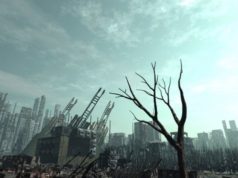
The Polish Ethnic Cleansing: A Painful Chapter in History
Introduction:
The Polish Ethnic Cleansing, also known as the “expulsion” or “resettlement,” refers to a dark period in history when millions of people were forcibly removed from their homes due to their ethnicity within the territory of Poland. This article delves deep into the historical context, reasons, consequences, and eventual outcomes of this tragic chapter, shedding light on a topic often overlooked.
Historical Background:
To understand this ethnic cleansing, we must examine the historical context. After World War II, Poland underwent significant geopolitical changes. The Soviet Union, controlling Eastern Europe, had imposed a communist regime in Poland, upsetting the balance of power in the region. Under Soviet influence, the Polish government initiated various measures targeting specific ethnic groups, with a primary focus on the German, Ukrainian, and Lithuanian populations.
Reasons for Ethnic Cleansing:
The ethnic cleansing policy had multifaceted motivations. Firstly, the Polish Communist Party aimed to gain control over territories and erase any potential opposition or perceived threats to the communist regime. Secondly, there existed deep-rooted historical grievances between the ethnic groups residing in these areas, which influenced the targeting decision. Lastly, the Soviet Union, as a regional power, often encouraged or supported such actions against minority populations in occupied territories.
Implementation of Ethnic Cleansing:
The process of ethnic cleansing in Poland was gradual. It initially started with propaganda campaigns aimed at creating an environment of hatred and fear against the target populations, portraying them as enemies of the state. This was followed by the forced expulsion of individuals from their homes, often accompanied by violence and intimidation. Displaced people were displaced across the country or deported to neighboring countries, resulting in immense suffering and loss.
Consequences and Human Cost:
The consequences of this ethnic cleansing were devastating. Families were torn apart, property was confiscated or destroyed, and communities were permanently disrupted. Many ethnic minorities faced discrimination, violence, and human rights abuses throughout this process. The psychological trauma inflicted on individuals who were forcefully removed from their homes is immeasurable. The overall human cost of this ethnic cleansing was staggering, with millions of lives forever changed.
International Response and Outcomes:
The international community was relatively silent on the Polish Ethnic Cleansing, mainly due to the geopolitical complexities of the time. However, this period left a profound impact on the affected communities, shaping the course of history for generations. Over time, some formerly displaced populations were able to return or reclaim their properties; however, the scars of this ethnic cleansing are still felt today, often resulting in strained relations between ethnic groups in the region.
Remembering and Learning from History:
The Polish Ethnic Cleansing remains a painful chapter in history that should not be forgotten. By studying and discussing these events, we can learn valuable lessons about the consequences of hatred, discrimination, and the tragic impact of forced displacements. Education plays a crucial role in promoting tolerance, acceptance, and the prevention of such atrocities in the future.
Conclusion:
The Polish Ethnic Cleansing exemplifies the darkest aspects of human history and serves as a stark reminder of the brutality and tragedy born out of ethnic discrimination. As we strive for a more inclusive and peaceful world, it is imperative to remember and learn from these painful memories, ensuring they are never repeated.
In Spring of 1940, Himmler had ordered the construction of one of the largest holocaust camps. The concentration camp was situated by Oswiecim, a Polish city, which was thereafter renamed Auschwitz by the Germans. This camp was to hold the Polish prisoners, where they were to work as slave laborers for the German-run factories that were planned to be built nearby. Over the course of the holocaust, 6 million Polish lives had been taken, half of them Jewish.
The holocaust process for the Poles could be divided into stages as seen by the establishments of the ghettos. Before the ghettos were formed, any attempts and escapes from persecution were not necessarily punishable by death. However, once the ghettos were formed, many Poles died from starvation and disease within the confines and destitute holocaust camps.
Their woes were only relieved by the smuggling of food and medicine. The rapid development of Jewish ghettos and holocaust camps across Poland was actually strongly linked with the also instituted, but very secretive centers for killings which were built at around the same period by various German construction companies. Hitler’s Operation Reinhardt, was a plan that involved the creation of German death camps for the sole use of rapidly exterminating Polish Jews in holocaust camps.
South-eastern Poland’s massive Jewish populations enabled the Majdanek camp which became a killing ground through means of gas chambers for the Polish Jews. The gassing was held in view of the other inmates and tractor engines had to be run near the chambers to drown the cries of those dying. The holocaust camp, Majdanek, was where 59,000 Polish Jews were killed, and at the end of Operation Harvest Festival in November of 1943, Majdanek only had 71 Jewish people left.
The operation “Final Solution” required mass transport of the Polish Jews on railways where they died from thirst and suffocation while in transit. This also helped the Nazi lie about “resettling” the Jews. The Gerstein Report on August 18, 1940 documented that the arrival of 45 wagons to the Belzec extermination camp found 1,450 people dead on arrival out of the 6,700 that originally had departed. Millions of people were transported and killed in this way.




















